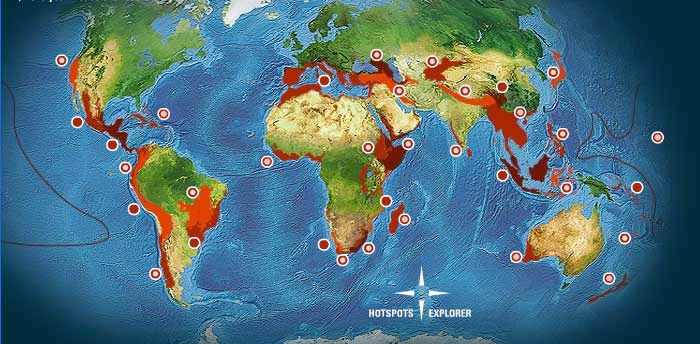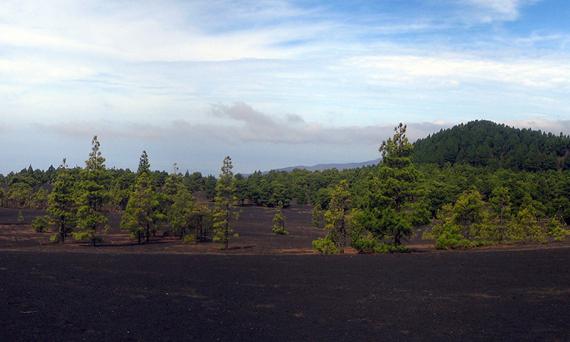Introduction
The purpose of the Global Taxonomy Initiative is to remove or reduce the ‘taxonomic impediment’ – in other words, the knowledge gaps in our taxonomic system, the shortage of trained taxonomists and curators, and the impact these deficiencies have on our ability to preserve biodiversity.
To give impetus to some of these objectives, the Belgian Focal Point for the GTI (the Royal Belgian Institute of Natural Sciences) works via calls for proposals. In 2004, it launched two calls for proposals:
- Call for taxonomy-based individual and institutional capacity building projects
This call was open to developing countries.
- Call for taxonomy-based research projects
This call was open to research projects with included a RBINS promotor.
Taxonomy-based individual and institutional capacity building
The support is targeted to institutions or individuals from developing countries in need of taxonomic and curatorial training. Such training should invariably have a clearly identified output in terms of increased taxonomic and/or curatorial capacity for the developing country or its region.
The GTI focal point received more than 30 expressions of interest, 11 formal proposals, and, finally selected 8 projects. Budgetary constraints were among the reasons not to select more projects.
The candidates cover a wide range of taxa or discipline of expertise (see below) and their backgrounds include researchers and technicians, as well as a person in charge of coordinating a taxonomic network. Duration of stay in Belgium ranges from one week to a little over a month.
Candidates selected for the call in March 2004:
Name Country Taxon / discipline of expertise Place of training in Belgium
SOIFA Ahmed Soilih Comoros Holothuroidea (sea cucumbers)
Royal Belgian Institute of Natural Sciences (Brussels) and Royal Museum of Central Africa (Tervuren)
YAHAYA Ibrahim Comoros Holothuroidea (sea cucumbers)
Royal Belgian Institute of Natural Sciences (Brussels) and Royal Museum of Central Africa (Tervuren)
DE MORAES PL Rodrigues Brazil Magnoliopsida (plants, focus on Lauraceae)
National Botanic Garden (Meise)
LUM Keng-Yeang Malaysia (ASEANET) Invertebrates and micro-organisms
Networking Royal Belgian Institute of Natural Sciences (Brussels)
WETSI LOFETE Jean Lambert DR Congo Diptera (flies, mosquitoes, etc.), Lepidoptera (butterflies)
Royal Museum of Central Africa (Tervuren)
CUERVO PINEDA Delfina Naomi Cuba Acari (mites)
Royal Belgian Institute of Natural Sciences (Brussels)
NGEREZA Christine Fishaa Tanzania Pulmonata (snails and slugs)
Royal Belgian Institute of Natural Sciences (Brussels)
GNAVOSSOU Desire Benin Diptera (flies, mosquitoes, etc.)
Royal Museum of Central Africa (Tervuren)
Taxonomy-based research projects
The support offered is seed money to initiate new capacity building initiatives within existing biodiversity research projects, or financial support to undergoing capacity building initiatives, in developing countries.
Projects can be undertaken with other institutions and universities, but the promoter must be a RBINS researcher and the project must involve RBINS expertise.
Four projects were submitted, three of which were granted funding in 2004.
Taxonomy-based research projects selected in 2004:
RBINS promotor Partner country Partner institution
Herpetological Species Richness and Community Structure on the Kaieteur National Park Tepui G. Lenglet, Ph. Kok (Vertebrate Section) Guyana CEIBA Biological Center
Biodiversity assessment at three protected areas in northwest Cambodia P. Grootaert (Entomology Department) Cambodia Sam Veasna Center for Wildlife Conservation (Siem Reap)
Training Program for the Study of Biodiversity and Management of Rodents and Shrews in Eastern Congo (Kisangani) E. Verheyen (Vertebrate Section) DR Congo Laboratoire d’Ecologie et de Gestion des Resources Animales (University of Kisangani)
Introduction
The specific convention between the Belgian Development Cooperation and the Royal Belgian Institute of Natural Sciences (2003-2007) aims to contribute to a better knowledge of biodiversity and to reach a better implementation of international environmental conventions in developing countries.
Action 2 focuses on the Global Taxonomy Initiative (GTI) established under the Convention on Biological Diversity. The purpose of the GTI is to remove or reduce the ‘taxonomic impediment’ – in other words, the knowledge gaps in our taxonomic system, the shortage of trained taxonomists and curators, and the impact these deficiencies have on our ability to preserve biodiversity.
• More information on taxonomy and on the GTI
• Specific convention between DGDC and RBINS
Type of support
Seed money is available for institutions or individuals from developing countries in need of taxonomic and curatorial training. Such training should invariably have a clearly identified output in terms of increased taxonomic and/or curatorial capacity for the developing country or its region.
Estimated number of supported projects
In 2004, the funding available to grant seekers is roughly 25.000 €. This amount will rise in following years. Funding covers both visits of trainees to Belgium, as well as visits of the Belgian tutor for the GTI (or equivalent, taxon-or subject dependent, tutor) to developing countries.
Amount of DGDC support per project
The funding should allow up to ten researchers to come over to Belgium to receive training in 2004. From 2005 to 2007, as more funding will become available, the number of visiting trainees will increase significantly.
Given the limited funding available, trainees are encouraged to seek additional funds from other funding bodies. The Belgian tutor for the GTI (or equivalent, taxon-or subject dependent, tutor) will annually carry out two to three training sessions on specific modules (each lasting one to two weeks) upon demand of partner countries.
Eligibility
The Belgian Development Cooperation has chosen to have privileged relations with 18 partner countries, mainly in Africa (Algeria, Benin, Burundi, DR Congo, Mali, Morocco, Mozambique, Niger, Uganda, Rwanda, Senegal, South Africa and Tanzania), but also in South America (Bolivia, Ecuador and Peru), Asia (Vietnam) and the Middle East (Palestine).
Figure: Belgium’s priority partners for development cooperation.
Individuals and institutes from other developing countries are nevertheless eligible to receive support and training.
Content requirements
The capacity building should focus on:
• taxonomic or parataxonomic training (with a priority to extant zoological taxa)
• collections establishment and/or management (including local/regional collections)
• tools for the study of biodiversity (e.g. molecular methods for species identification) or to apply biodiversity data (e.g. taxonomic keys)
Note: the Belgian Development Cooperation has identified priority sectors of the Belgian cooperation in its ‘Environmental strategic note’ in 2003 and in its ‘General policy note for 2004’. Projects addressing those issues will have an advantage.
Project period
Dependant on number and type of projects received annually.
Submission instructions
Complete application form in English or French should reach the Belgian tutor of the GTI no later than March 31st or November 30th to be eligible for the period May 2004 to March 2005.
Indicative timeline for review of proposals and execution of pilots
1 March 2004
Call for proposals distributed through Belgian CHM
31 March / 30 November 2004
Proposals due
1 -15 April /1 -15 December 2004
Proposals reviewed
20 April / 20 December 2004
Successful applicants contacted
May to July 2004 / January to March 2005
Execution of visits of trainees to Belgium
1 September 2004 / 1 May 2005
Reports of trainees due
October to December 2004 / March to April 2005
Visit of Belgian tutor (or equivalent) to partner country
Principles by which proposals will be reviewed
They will be based on the selection criteria on application form.



